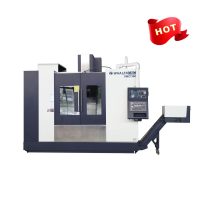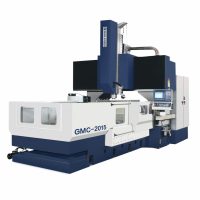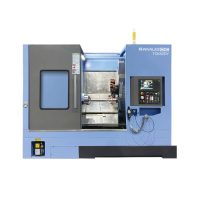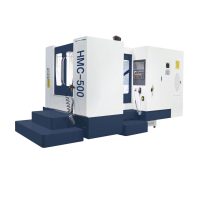E-Mail:sales@whalescnc.com
E-Mail:sales@whalescnc.com
CNC Machine Tool Daily Maintenance Guide(Check list)
Machining centers are advanced processing equipment with a high degree of automation, complex structure, and high cost. They play a significant role in modern industrial production. To fully harness the capabilities of the machining center, it is crucial to carry out regular maintenance and care, thereby reducing the failure rate of the machining center.
1.Daily Maintenance and Care of Machining Centers
Under general circumstances, the daily maintenance and care of machining centers are carried out by the operators. Therefore, operators should be familiar with the basic structure and principles of the equipment they use. This includes understanding the locations and specified usage environments of mechanical transmission devices, numerical control devices, hydraulic and pneumatic devices, electrical cabinets, and other components. They should strictly follow the machine’s user manual for correct and reasonable operation. Operators should also be well-acquainted with the specifications of the machine they are using, such as the power of the main spindle drive motor, the range of spindle speeds, feed rates, machine travel range, worktable load capacity, the maximum tool size allowed by the ATC, the maximum tool weight, and so on. Additionally, they need to know the locations of various oil markers and the type of lubricating oil to use.
Before operating the machine, it is essential to check if the lubrication oil levels for the spindle, rails, and other parts meet the requirements, and to confirm if the air pressure is within the specified range. Only after these checks can the machine be started. After starting, the machine should run idle for more than 15 minutes to check for any abnormalities.
It’s vital to keep the environment around the machine clean. Air filters should be cleaned regularly to prevent blockages in the cooling air channels, which could lead to overheating in the numerical control cabinet and disrupt the normal operation of the control system. Circuit boards and electrical components inside the electrical cabinet also need regular dusting to ensure the electrical system functions correctly.
The following sections will introduce the daily maintenance and care of machining centers and solutions for any abnormal phenomena, as seen in Tables 1 to 6.
Table 1 Daily inspection
|
No. |
Project |
Normal Circumstances |
Solution |
|
|
1 |
Hydraulic system |
oil mark |
between two red lines |
Refuel |
|
pressure |
3.9MPa |
Adjust pressure screw |
||
|
Oil temperature |
>15°C |
Turn on the heating switch |
||
|
filter |
Display green |
Clean |
||
|
2 |
Spindle lubrication system |
Process testing |
The power light is on and the hydraulic pump is operating normally. |
Contact a mechanical engineer |
|
oil mark |
The oil level shows more than 1/2 |
Refuel |
||
|
3 |
Guide rail lubrication system |
oil mark |
between two red lines |
Refuel |
|
4 |
cooling system |
oil mark |
The oil level shows more than 2/3 |
Refuel |
|
5 |
pneumatic system |
pressure |
0.49MPa |
Regulate pressure valve |
|
Lubricating oil standard |
about 1/2 |
Refuel |
||
Table 2 Weekly inspection
|
No. |
Project |
Normal Circumstances |
Solution |
|
|
1 |
Machine tool parts |
moving parts |
Cleaning machine tools |
|
|
Other details |
||||
|
2 |
Spindle lubrication system |
heat sink |
Dust removal |
|
|
air filter |
||||
Table 3 monthly inspection
|
No. |
Project |
Normal Circumstances |
Solution |
|
|
1 |
Shen Yuan |
voltage |
50Hz, 220~380V |
measure, adjust |
|
2 |
air dryer |
filter |
Clean |
|
Table 4 Half-year inspection
|
No. |
Project |
Normal Circumstances |
Solution |
|
|
1 |
Hydraulic system |
Hydraulic oil |
Change hydraulic oil |
|
|
tank |
Clean fuel tank |
|||
|
2 |
Spindle lubrication system |
lubricating oil |
Change lubricating oil |
|
|
3 |
transmission shaft |
ball screw |
Grease |
|
Table 5 Causes and solutions for abnormal phenomena in the hydraulic system
|
No. |
Anomalies |
Reason |
Solution |
|
1 |
Oil pump does not inject oil |
Not enough oil |
Refuel |
|
Oil pump reverse |
change direction |
||
|
Oil viscosity too high |
Change oil |
||
|
Air is sucked into the oil inlet |
Prevent air leakage |
||
|
Oil pump damaged |
Replace oil pump |
||
|
2 |
Oil pressure is too high or too low |
Improper pressure setting |
Set pressure as required |
|
Oil pressure system leaks |
Prevent leakage |
||
|
Foreign matter mixed in oil |
Change oil |
||
|
Damaged pressure gauge |
Replace pressure gauge |
||
|
3 |
The oil pump is noisy |
Oil mixed with air |
filter out air |
|
Filters and suction tubes are clogged |
Clean |
||
|
Oil pump shaft and motor shaft are not coaxial |
Adjust coaxiality |
||
|
Resonance occurs |
Eliminate resonance |
||
|
Rated flow rate of valve exceeded |
Adjust flow |
Table 6 Causes and solutions for abnormal phenomena in the air pressure system
|
No. |
Anomalies |
Reason |
Solution |
|
1 |
Air pressure is too low |
Air pump abnormality |
Repair air pump |
|
Components are damaged, leaking, or clogged |
Repair and replace components |
||
|
Improper air pressure setting |
cathartic pressure |
||
|
2 |
No air pressure |
air dryer not working |
Check and repair air dryer |
|
Air pump not working |
Check, repair and replace air pump |
2.Safety Operating Procedures
Given the high technological content of machining centers, their operation is much more complex than regular machine tools. Therefore, it is imperative to strictly follow operating procedures to ensure the machine runs normally. A skilled operator must understand the requirements of the parts being machined, the process route, and the characteristics of the machine before operating the machine to complete various machining tasks. To use the machining center correctly and ensure its normal operation, a comprehensive set of operating procedures for the machining center must be established.
(1)Precautions Before Machining on the Machining Center:
- After powering on the machine tool, inspect all switches, buttons, and keys to ensure they function properly and flexibly. Check for any abnormalities in the machine tool.
- Check if the voltage, oil pressure, and air pressure are normal. Manually lubricate parts that require manual lubrication.
- Manually reset all coordinate axes to zero (machine origin). If an axis is already at the zero position before resetting, move that axis to a position more than 100mm away from the origin before manually resetting it.
- When rotating the worktable for exchange, ensure there are no obstructions on the table surface, protective cover, or rails.
- To achieve thermal equilibrium in the machine, let it run idle for more than 15 minutes.
- After inputting the program, review it carefully to ensure accuracy. This includes checking codes, commands, addresses, values, signs, decimal points, and syntax.
- Install the fixture according to the process procedure and ensure it’s correctly aligned.
- Accurately measure and calculate the workpiece coordinate system, and verify and check the obtained results.
- Input the workpiece coordinate system into the offset page and carefully verify the coordinates, coordinate values, signs, and decimal points.
- Before mounting the workpiece, run the program once without the workpiece to check if the program runs smoothly, if the tool length selection and fixture installation are reasonable, and if there are any over-travel issues.
- After inputting the tool compensation values (radius, tool length) into the offset page, carefully verify the tool compensation number, compensation value, sign, and decimal point.
- When clamping the workpiece, ensure that screws or clamps don’t obstruct tool movement. Check the workpiece blank for any abnormal sizes. During machining, ensure the tool doesn’t damage the vise or other parts.
- Inspect the installation direction of each tool head and the rotation direction of each tool to ensure they match the program requirements.
- Check the shape and size of the front and rear parts of each tool shank to ensure they meet the machining process requirements and won’t collide with the workpiece or fixture.
- The exposed diameter part of the boring tool head tail must be smaller than the exposed diameter part of the tool tip.
- Ensure that every tool shank can be tightened securely in the spindle hole.
(2)Precautions During Machining on the Machining Center:
- For both first-time machined parts and periodically repeated machined parts, it’s essential to perform a trial cut for each tool and each program segment according to the drawing process, program, and tool adjustment card.
- During single-segment trial cuts, the rapid rate switch must be set to a lower gear.
- When using a tool for the first time, it’s crucial to verify if its actual length matches the given compensation value.
- During program execution, pay special attention to several displays on the CNC system:➣ Coordinate Display: This helps understand the current position of the tool movement point in the machine coordinate system and the workpiece coordinate system. It provides insights into the movement amount of this program segment and how much movement remains.➣ Register and Buffer Register Display: This shows the status instructions of the currently executing program segment and the content of the next program segment.➣ Main Program and Subprogram: This provides details about the content of the currently executing program segment.
- When trial cutting, as the tool approaches the work surface (about 30-50mm away), it’s essential to verify the Z-axis remaining coordinate value and the X, Y-axis coordinate values to ensure they match the drawing.
- For tools that require trial cutting, use a “gradual” approach. For example, when boring, you can first bore a short length, check if it’s correct, and then bore the entire length. For tools using the tool radius compensation function, start with a smaller value and adjust as you trial cut.
- During trial cutting and machining, after sharpening a tool or changing tool accessories, always remeasure the tool length and adjust the tool compensation value and number.
- When searching within a program, ensure the cursor’s position is logical and accurate. Also, observe if the tool’s movement direction matches the machine’s movement coordinate direction.
- After modifying a program, carefully calculate and thoroughly verify the modified parts.
- When using handwheel feed or manual continuous feed, ensure all switch positions are correctly selected, understand the positive and negative directions, identify the correct buttons, and then proceed with the operation.
(3)Precautions After Machining on the Machining Center:
- After completing the entire batch of parts, verify the tool number and compensation value to ensure consistency between the program, offset page, adjustment card, and the tool number and compensation value in the process.
- Unload tools from the tool magazine and, according to the adjustment card or program, clean and store them with the correct numbering.
- Store magnetic tapes, disks, along with the process and tool adjustment cards, as a complete set.
- Unload the fixture. For certain fixtures, record their installation position and orientation, and archive this information.
- Clean the machine tool.
- Position all coordinate axes at their midpoints.
- First, turn off the CNC system power, then turn off the machine tool power.
Need to buy a machine tool?
You can upload drawings of machined parts. Our experts will help you determine the best machine for your needs.
About WhalesCNC
WhalesCNC is a high-quality CNC machine tool manufacturer located in Xuzhou, Jiangsu, China. It has more than 20 years of manufacturing experience and is committed to comprehensive solutions to improve cutting efficiency.




